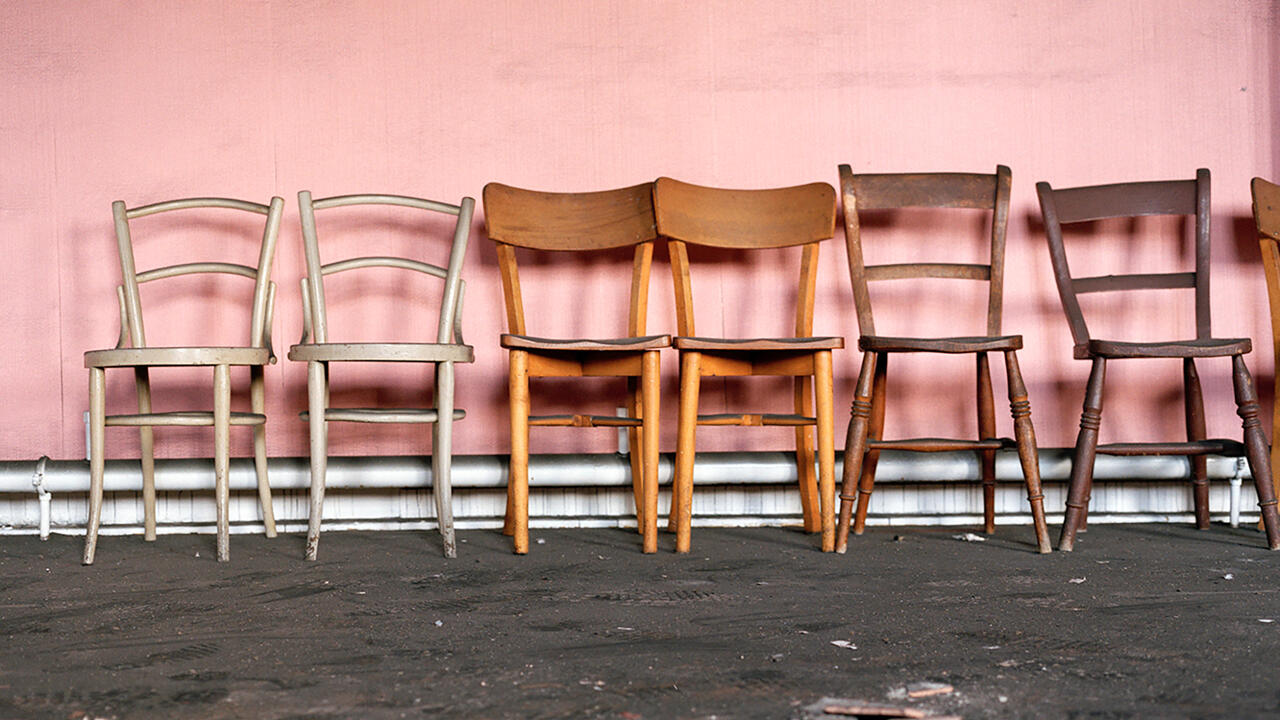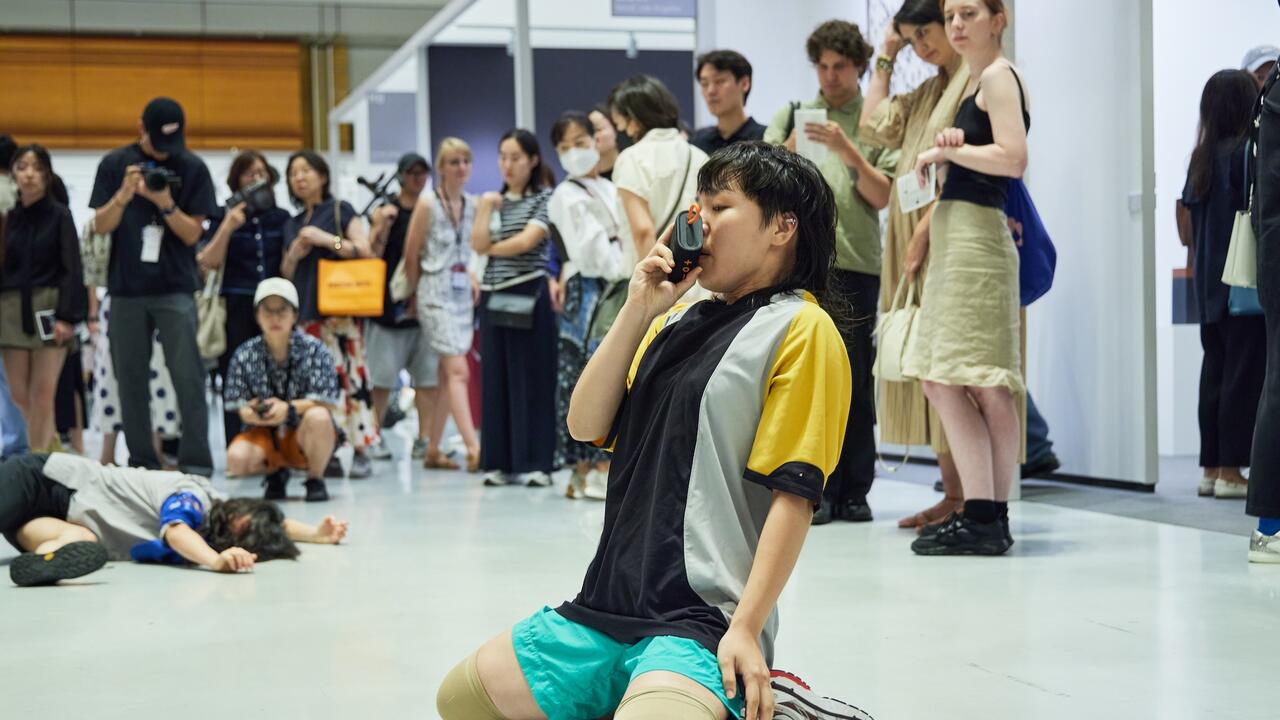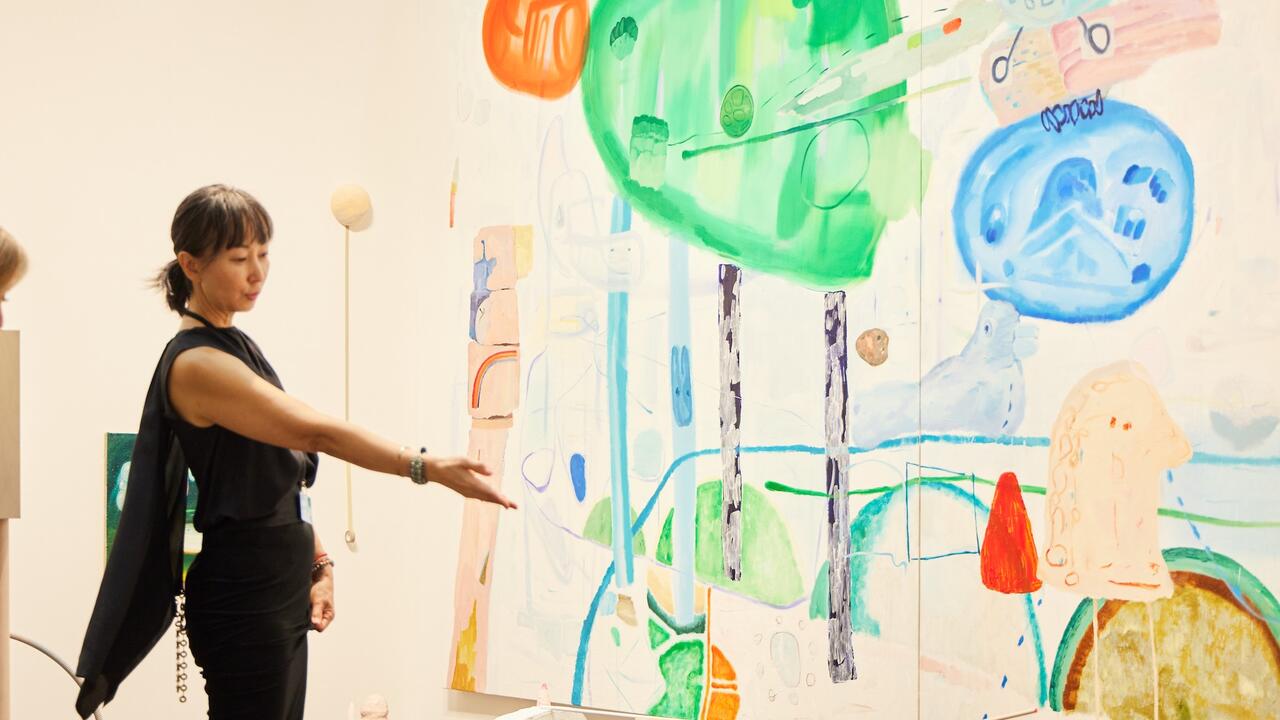By Night
Nietzsche once referred to the ear as 'the organ of fear', and I suddenly understood why after plunging into obscure semi-darkness on entering the Cartier Foundation. Easing down a sparsely lit, dusky-grey passage felt like descending into hell. A cacophony of faint echoes swirled around low mumbling, high-pitched bells, the rumbling of beating drums, the occasional crashing of cymbals and strains of Bruce Springsteen soft and distinctly unsettling. Unable to rely on sight, I clung to the sounds, which seemed necessary in untangling the sense of disorientation. But in reality, they fed the mounting wildness of the imagination.
Multiple senses come into play in the unusual, experiential 'By Night', a meandering tour of some 150 works by 82 artists, the majority American. Playing on a series of ironies and anachronisms, the exhibition frames a world of artificiality and opposition, starting with the building itself. Like a weird, half-finished Christo, Jean Nouvel's sleek, gleaming glass-and-steel box, acclaimed for its transparency, has been draped in inky-blue vinyl and transformed into something solid and opaque.
The show is a literal embodiment of the French expression for the utterly faraway: 'se perdre dans la nuit de temps' (to lose yourself in the night of time). Exploring the idea of night in all its guises serene, starry nights, deeply silent and dreamlike; the anxious night of sleepwalkers; jazzy urban nights bathed in fluorescent neon this eclectic grouping of rarely shown works is presented in the foundation's labyrinthine basement with no apparent chronological or thematic order. Rather, 'By Night' is a kind of random game, like the Surrealists' cadavre exquis, both provocative and resonant.
Unorthodox juxtapositions occur in each corridor of this dimly lit maze: from eerie figures by Magritte, a cosy Vuillard interior, or a romantic landscape by Victor Hugo, to the harsh modernity of Nan Goldin's hypnotic Ballad of Sexual Dependency, a non-stop parade, accompanied by music (the source of the Springsteen), of 720 nightlife images mingling pain, pleasure and self-abandon.
A haunting Nadar photograph of 1861 tells us we're in for a bizarre ride: it is a fascinating image of the catacombs in which a figure, facing away from the viewer, leans precariously against the skulls lining the wall. An impressive roster of powerful photographs reveal night's seedy, dangerous side, including Gary Winogrand's off-stage stripper and Weegee's murder victim, Corpse With Revolver (ca. 1940), his gun abandoned, his bloody face smashed into the sidewalk.
Such dark intensity is balanced, however, by the inclusion of luminous first photographs of the lunar surface, strikingly poetic shots from turn-of-the-century Paris and large-scale, original comic-strip pages of Winsor McCay's Little Nemo or Hergé's Tintin. A particularly lovely sequence, Merry Alpern's Dirty Windows (1993-94) reveals hidden, intimate moments captured across the street from a private Wall Street brothel. These vague, shadowy images of lingerie-clad torsos, passing faceless and half-dressed before the window, evoke a mysterious night that is somehow touching in its search for human connection. Like the night itself, the combination is electric: at times aggressive and joyous, at others mysterious and meditative.
Marie-Ange Guilleminot's filmic voyage of a sleepless young woman wandering aimlessly through the city a modern-day angel in a white raincoat, gliding noiselessly past blinking street lights and lampposts might suggest that 'By Night' is a metaphor for a kind of unconscious odyssey.
By their very nature, theme shows are problematic and provocative; the viewer can always imagine several different shows with the same motif. But the pleasure and magic of this highly designed show is, paradoxically, in its sense of chance: its strength lies in its conception as a haphazard nocturnal promenade, guided simply by the fascination and emotion that night-time inspires.
Perhaps the most poignant moment in the show is Bill Viola's brilliant, terrifying video installation Tiny Deaths (1993) in which a sequence of figures constantly materialise and disappear. At first, blank screens covering three walls of a small, darkened gallery emit tiny sparks of light, like fireflies. For a long moment, the room is swallowed up by the blackness and the unintelligible murmuring of invisible speakers. Without warning, strongly lit silhouettes of everyman (overweight middle-aged men, bony elderly women, sad-looking little children) rapidly emerge. Swiftly, the light they emit defines and brightens the images until, in a flash, they burn blinding white and dissolve into darkness.
The rhythm of these bodies looming and vanishing ghosts, hallucinations, reflections of ourselves, ancestors we've never met, memories of lost friends etched onto our retina accelerates and slows down unpredictably, frighteningly. The room, which feels at times like a dream space (the physical manifestation of an inner world of terror) or the skin hugging our body, becomes dwarfed and stifling, yet at once excessive and unfathomable.
It's here in Tiny Deaths more than anywhere else in the exhibition, that the fiction of 'By Night' takes on a suffocating reality. By plunging us into the fabricated, artificial nocturnal visions of others, the exhibition thrusts us back into our own heads, into our own fears, anxieties and nightmares.
















